
If you are trying to reach other businesses and professionals, then Advertising on LinkedIn is one to try. Unlike Facebook, Twitter, and other social advertising platforms, LinkedIn has targeting options so specific that you’ll be able to increase conversions while decreasing costs. In this post, we’re going to look at the essentials of creating a successful advertisement on LinkedIn.
LinkedIn Advertising Plan Outline
Before we dive in to details, here is the quick outline of what you will need to execute a successful LinkedIn advertising campaign.
- A LinkedIn account to use LinkedIn advertising. While you don’t need a completed profile or company page if you are linking to your website in your ad, having both are good for your overall online presence.
- A definition of your ideal customer for ad targeting purposes.
- A landing page customized for the product or service you are advertising targeted to your ideal customer.
- An idea of how you want your ad to look by researching other ads on LinkedIn.
- Strong headlines, descriptions, and images for your LinkedIn ad variations.
- Time to review your ad variations to only use the ones with the best conversion rates.
- Time to measure your results to determine if LinkedIn ads are right for your business.
Now, let’s go into specifics!
1. Define Your Ideal Customer
Before you get started with any paid advertising campaign, you need to define your ideal customer. Otherwise, you won’t know who to target your ad to and might wind up spending more money than is necessary to convert with the right audience.
Try to be as specific as possible when defining your ideal customer. What type of company do they work for (technology, retail, restaurant, etc.)? what position are they in (manager, sales, executive, etc.)? Where are they located? and so on.
If you’re not sure about these details, take a look at your current client list and see if they are LinkedIn. Specifically, look at the bottom of company pages to find basic about information…
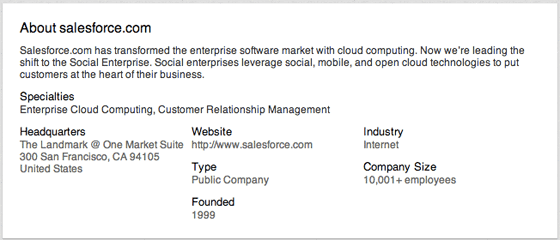
Then look under the How You’re Connected area to find people from the company that you are connected with.
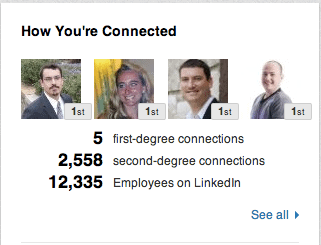
You can then note job titles, skills, and other important details that might come in handy for your LinkedIn ad targeting.
2. Create One (or More) Landing Pages
Once you’ve defined your ideal customer and determined what you want to advertise to them, make sure you have created landing pages that sell those ideal customers and your advertised product or service.
Some great landing pages to use in your LinkedIn advertising campaign include:
- Pages for specific products or services with emphasis on how they can help your ideal customer.
- Free trial offer pages for your product or service.
- Squeeze pages to build your company’s mailing list by offering free content or discounts.
If you need help with landing pages, be sure to refer to the huge collection of articles here with landing page tips and landing page examples.
Also, if you sell products, you can look at my favorite landing page examples from Shopify. They have over 100 targeted landing pages for a wide variety of businesses including those selling services, construction equipment, and office supplies. Targeted landing pages can help increase conversion rates dramatically.
3. Research Other LinkedIn Ads
If you need a little inspiration, you can find LinkedIn ads while browsing most parts of the site at the bottom of the right-hand sidebar.
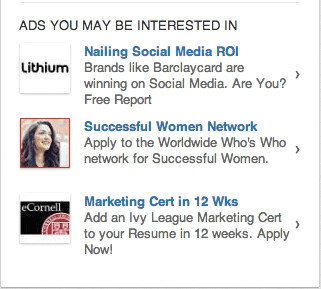
These ads are shown to you based on information in your professional profile. When you are viewing your main LinkedIn newsfeed, keep scrolling down. As the page shows you older activity from your network, it will also refresh the ads so you can see more than just the first three that match your profile.
As you do this, note which headlines, descriptions, and images stand out most to you. You may even want to click through to see what landing pages the advertiser is using if the ads are similar to what you will be creating.
4. Create Your LinkedIn Ad
Now that you have your ideal customer defined and your targeted landing pages created, you are ready to create your ad. To get started, go to LinkedIn Advertising, sign in with your LinkedIn account, and start a new campaign.
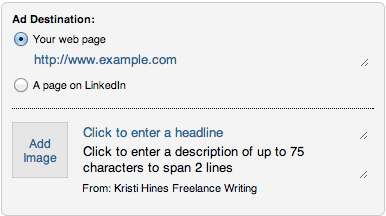
For each campaign, you can create up to 15 ad variations. This can help you test different headline, description, image, and landing page combinations to find the one that works best on your ideal customer. Note that all 15 variations will have the same targeting criteria – you will have to create a new campaign per different targeting profile.
When you put in your landing page, be sure to use UTM parameters to help identify traffic coming to your landing page from your LinkedIn ad. You can use Google’s URL builder to easily create the correct URL structure to identify the ad traffic in your Google Analytics.
5. Target Your Ad
Once you have entered your ad variations, you will then target your ad towards a specific audience. You can target your ad to be shown to people based on location, company industry and size, job title and seniority, school, skills, groups they belong to, gender, and age. As you narrow down your audience, you will be shown an estimate of the audience size.
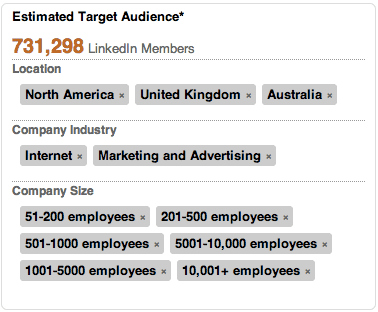
Be sure to keep targeting your ad to as specific of an audience as possible. The goal isn’t to have a huge potential audience to click on it. The goal is to have a targeted audience who will not only click through, but also convert. This will keep your advertising costs low and conversions high.
6. Set Your Budget
Next, you will set your budget. You can choose a CPC campaign (cost per click) or a CPM campaign (cost per 1,000 impressions).
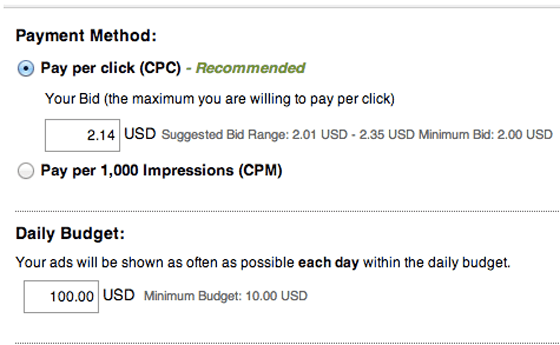
If the goal is conversions, then you’ll most likely want to choose the CPC option. If the goal is increased visibility for your business, then you’ll most likely want to choose the CPM option.
7. Focus on Successful Variations
If you created multiple variations of your ad, you can visit the LinkedIn ad analytics, click on your campaign, and see the impressions vs. click through rate for each of the variations.
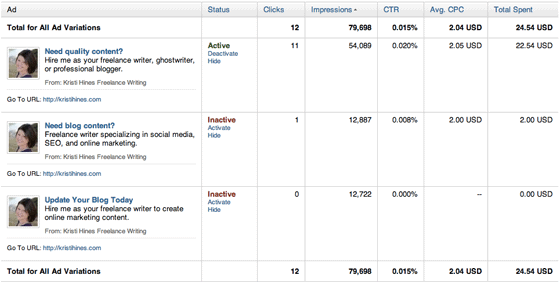
Here, you can toggle off the least successful variations so that your high converting ones are showed prominently. You can also edit each variation in order to keep testing different copy, images, and landing pages to find the combination that delivers the best results.
9. Measure the Results
There are three ways to measure your LinkedIn ad campaign results. The first is by viewing your LinkedIn ad analytics to see the clicks by date range and by campaign.
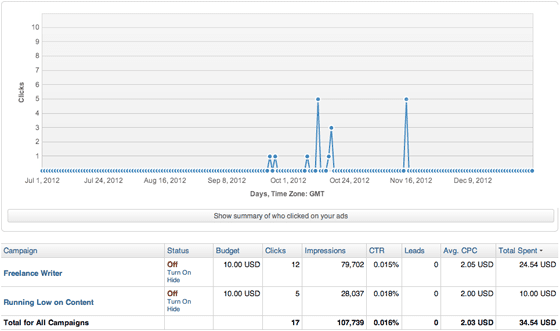
If you used UTM parameters for Google Analytics, you can see more information about visitor behavior from the ad to your website by looking under Traffic Sources > Sources > Campaigns.

If you don’t use UTM parameters, you can look under Traffic Sources > Sources > Referrals to see traffic from the entire LinkedIn network.
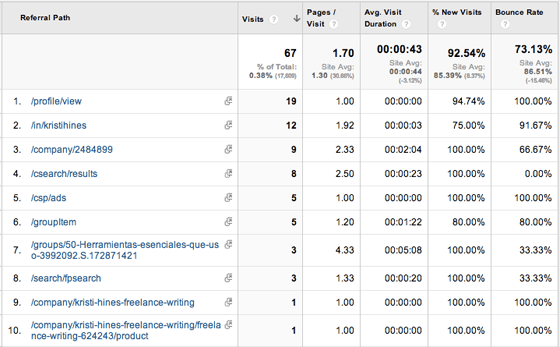
Here, you can see the difference in traffic from your ad compared to other areas like your profile, company page, search results, groups, and other LinkedIn areas.
The combination should help you decide if your LinkedIn ads are giving you the results you need compared to other social advertising platforms as well as compared to other activity on LinkedIn.
Do you use LinkedIn advertising? What results have you seen? Please share in the comments!
author: Kristi Hines
http://unbounce.com/social-media/guide-to-linkedin-advertising/

No comments:
Post a Comment